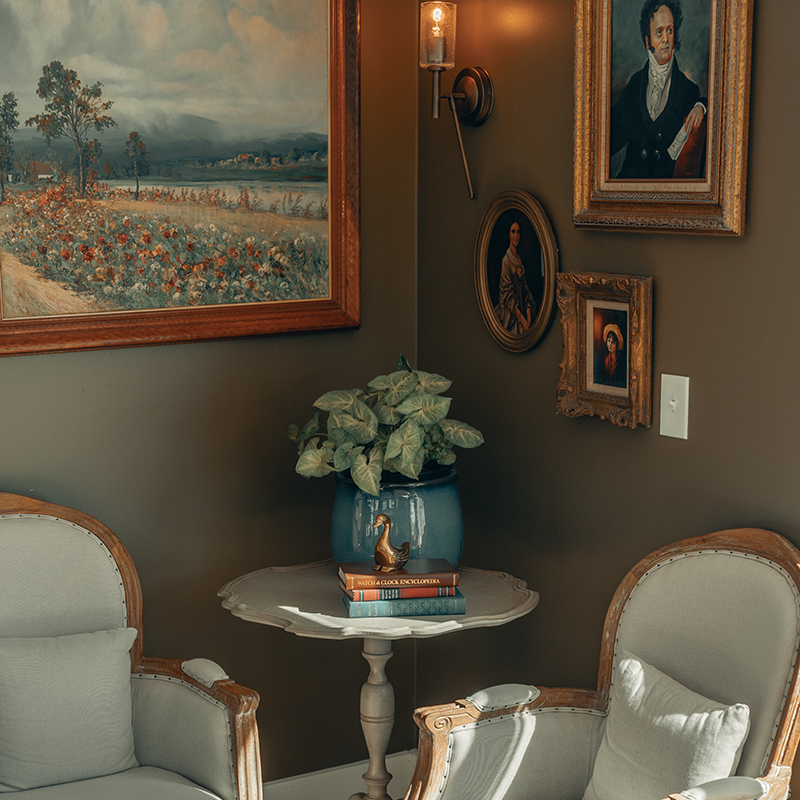USA Insurance for High-Value Antiques and Art

Insurance for high-value antiques and art collections USA presents unique challenges and considerations. Protecting irreplaceable heirlooms and valuable artwork requires specialized insurance policies that go beyond standard homeowner’s or renter’s coverage. This comprehensive guide explores the intricacies of securing adequate protection for your prized possessions, from understanding different policy types and selecting the right insurer to implementing effective risk management strategies and navigating the claims process.
We will delve into the critical aspects of appraisal, valuation, and security measures, ensuring your collection remains safeguarded.
Understanding the nuances of art and antique insurance is crucial for collectors of all sizes. This guide aims to provide clarity on the various policy options available, helping you make informed decisions to protect your investment. We’ll cover topics ranging from the types of coverage offered, the importance of professional appraisals, and the steps involved in filing a claim, providing you with the knowledge to confidently navigate the world of fine art and antique insurance.
Enhance your insight with the methods and methods of term life insurance for cancer survivors in remission USA.
Table of Contents
ToggleTypes of Insurance Coverage for High-Value Antiques and Art
Protecting valuable antique and art collections requires specialized insurance coverage. Several policy types cater to the unique risks associated with these assets, each offering varying levels of protection and cost. Understanding these differences is crucial for securing adequate coverage.
All-Risk Policies
All-risk policies, also known as “open perils” policies, provide the broadest coverage. They protect your collection against virtually any loss or damage, except for specifically excluded perils, which are usually detailed in the policy document. This comprehensive protection offers peace of mind, but it typically comes with a higher premium.
Named Perils Policies
In contrast, named perils policies only cover losses or damages resulting from specific events listed in the policy, such as fire, theft, or vandalism. If a loss occurs due to an unforeseen event not explicitly listed, the policy will not provide compensation. While less expensive than all-risk policies, the limited coverage presents a significant risk.
Fine Art Specific Policies
Fine art-specific policies are designed to address the unique needs of art collectors. These policies often include specialized coverage for damage during transit, restoration costs, and even loss of market value. They may also offer additional benefits, such as appraisal services and consultation with art experts. The cost reflects the specialized nature of the coverage.
Comparison of Insurance Policy Types
| Policy Name | Coverage Details | Limitations | Average Cost Factors |
|---|---|---|---|
| All-Risk | Covers virtually all perils except those specifically excluded. | Higher premiums; exclusions may still apply. | Value of collection, location, security measures, and appraisal costs. |
| Named Perils | Covers only specified perils (e.g., fire, theft). | Limited coverage; excludes many potential risks. | Value of collection, location, and type of perils covered. |
| Fine Art Specific | Comprehensive coverage tailored to fine art, including transit and restoration. | May have higher premiums; specific exclusions may apply. | Value of collection, appraisal costs, and specialized services included. |
Factors Influencing Insurance Costs
Several factors influence the cost of insurance for high-value antiques and art. The value of the collection is the most significant determinant. The location of the collection also plays a role, with higher-risk areas commanding higher premiums. Robust security measures, such as alarms, surveillance systems, and climate control, can significantly reduce premiums. Finally, a professional appraisal is usually required, and the cost of this appraisal will factor into the overall insurance cost.
Insurer Selection and Policy Considerations
Choosing the right insurer is paramount. Careful consideration of several factors ensures adequate protection and a smooth claims process. This includes assessing the insurer’s reputation, financial stability, and experience in handling high-value art and antiques.
Key Factors in Insurer Selection
Select an insurer with a proven track record in handling claims related to art and antiques. Examine their financial strength ratings to ensure they can meet their obligations in case of a claim. Look for insurers offering specialized services such as appraisal assistance, consultation with art experts, and pre-loss planning services. Transparency in their policy terms and claims process is also essential.
Crucial Elements of a Comprehensive Policy
A comprehensive policy should clearly define covered perils, the valuation method used, the claims process, and settlement options. It should specify appraisal requirements, including the frequency of appraisals and the acceptable appraisers. The policy should also detail the procedures for reporting a loss or damage and the process for settling claims, including timelines and payment methods.
Negotiating Favorable Terms
Don’t hesitate to negotiate terms and conditions with insurers. Consider obtaining multiple quotes from different providers to compare coverage and pricing. Clearly articulate your needs and the specific risks associated with your collection. Be prepared to provide detailed information about your collection, security measures, and storage conditions to secure the best possible terms.
Checklist of Questions for Potential Insurers, Insurance for high-value antiques and art collections USA
- What perils are covered under the policy?
- What is the valuation method used?
- What are the appraisal requirements?
- What is the claims process, and what documentation is required?
- What are the settlement options (e.g., cash, replacement)?
- What is the insurer’s financial strength rating?
- What is their experience with high-value art and antique claims?
- What are the policy’s exclusions?
Appraisal and Valuation of Antiques and Art
Professional appraisal is crucial for accurate insurance coverage. A qualified appraiser uses various methods to determine the value of your collection, ensuring your insurance adequately protects your investment. This valuation process is also important for accurate record-keeping and facilitates smoother claims processes.
Importance of Professional Appraisal
A professional appraisal provides an objective assessment of your collection’s value. This ensures that your insurance coverage aligns with the actual value of your assets. A detailed appraisal report is essential for supporting insurance claims and documenting the value of your collection for tax purposes or estate planning.
Methods for Determining Value
Appraisers use several methods to determine value, including market analysis (examining recent sales of comparable items), comparable sales (comparing your items to similar items sold recently), and auction records (referencing past auction results for similar pieces). The appraiser considers factors such as the item’s age, condition, provenance, artist’s reputation, and current market trends.
Documenting Your Collection
Maintaining a detailed inventory is essential. This should include high-quality photographs of each item, detailed descriptions (including dimensions, materials, and any identifying marks), purchase documentation (receipts, invoices, or certificates of authenticity), and appraisal reports. This comprehensive documentation facilitates claims processing and protects your interests in case of loss or damage.
Essential Details in an Appraisal Report
- Detailed description of each item
- High-quality photographs
- Valuation method used
- Date of appraisal
- Appraiser’s qualifications and credentials
- Statement of the item’s condition
- Market analysis supporting the valuation
Risk Management and Security Measures for Art Collections
Proactive risk management significantly reduces the likelihood of loss or damage and can influence insurance premiums. Implementing robust security measures demonstrates your commitment to protecting your collection, potentially leading to lower insurance costs. This proactive approach safeguards your valuable assets and provides peace of mind.
Protecting Your Collection

Source: artshuttlenyc.com
Environmental controls are crucial, especially for items sensitive to temperature and humidity fluctuations. Proper storage solutions, such as climate-controlled vaults or museum-quality display cases, protect against damage. Regular maintenance of these systems is essential. Secure storage locations, with limited access and robust security systems, are vital for deterring theft.
Security Measures and Their Impact
Security systems, such as alarms, surveillance cameras, and motion detectors, deter theft and provide evidence in case of a break-in. Climate control systems protect against environmental damage. These measures not only protect your collection but can also lead to lower insurance premiums as they demonstrate a reduced risk profile to the insurer.
Proper Storage and Handling
Proper handling and storage techniques vary depending on the type of antique or artwork. Fragile items require extra care, while paintings need appropriate lighting and humidity control. Regular inspections and professional cleaning can help maintain the condition of your collection.
Recommended Security Measures
- High Effectiveness, High Cost: State-of-the-art security system with 24/7 monitoring, climate-controlled vault.
- High Effectiveness, Moderate Cost: High-quality security system with alarm and motion sensors, secure storage with limited access.
- Moderate Effectiveness, Low Cost: Basic alarm system, improved lighting, inventory tracking system.
Claims Process and Dispute Resolution: Insurance For High-value Antiques And Art Collections USA
Understanding the claims process is vital. Thorough documentation significantly improves the likelihood of a successful claim. Knowing how to navigate potential disputes ensures a fair and timely resolution.
Filing an Insurance Claim
Report the loss or damage immediately to your insurer. Gather all relevant documentation, including the appraisal report, photographs of the damaged or lost item, police reports (if applicable), and any other supporting evidence. Follow the insurer’s instructions carefully and provide all requested information promptly.
Role of Documentation
Comprehensive documentation is crucial for supporting your claim. High-quality photographs of the damaged or lost item, before and after the incident, are essential. The appraisal report provides evidence of the item’s value. Police reports document the circumstances of theft or vandalism. Maintain clear records of all communication with the insurer.
Potential Disputes and Resolution
Disputes may arise over the valuation of the item, the cause of the damage, or the extent of coverage. Attempt to resolve disputes amicably with the insurer. If necessary, seek legal counsel to protect your interests. Review your policy carefully to understand your rights and options for dispute resolution.
Preparing a Comprehensive Claim Document
Include a detailed description of the loss or damage, specifying the date, time, and location of the incident. Attach all supporting documentation, including photographs, appraisal reports, police reports, and communication records with the insurer. Clearly state your desired outcome, such as financial compensation or replacement of the item.
Final Summary

Source: howdeninsurance.ie
Securing adequate insurance for your high-value antiques and art collection in the USA is a critical step in protecting your investment and preserving your legacy. By carefully considering the various policy options, selecting a reputable insurer, implementing robust risk management strategies, and understanding the claims process, you can ensure your prized possessions are adequately protected against unforeseen circumstances. Remember, proactive planning and informed decision-making are key to safeguarding your valuable collection for generations to come.
Top FAQs
What is the difference between an all-risk and a named perils policy?
An all-risk policy covers all perils except those specifically excluded, while a named perils policy only covers losses explicitly listed in the policy.
How often should I have my art collection appraised?
Appraisals should be updated every 3-5 years, or more frequently if there are significant changes in market value or the collection itself.
What documentation is needed to file a claim?
Typically, you’ll need a detailed inventory, appraisal reports, photographs of the damaged/lost items, and a police report (if theft is involved).
Can I insure individual pieces or only my entire collection?
Both options are generally available. Insuring individual pieces may be more costly but offers flexibility.
What factors affect the cost of insurance?
Value of the collection, location, security measures, type of policy, and the insurer’s risk assessment all influence the premium.